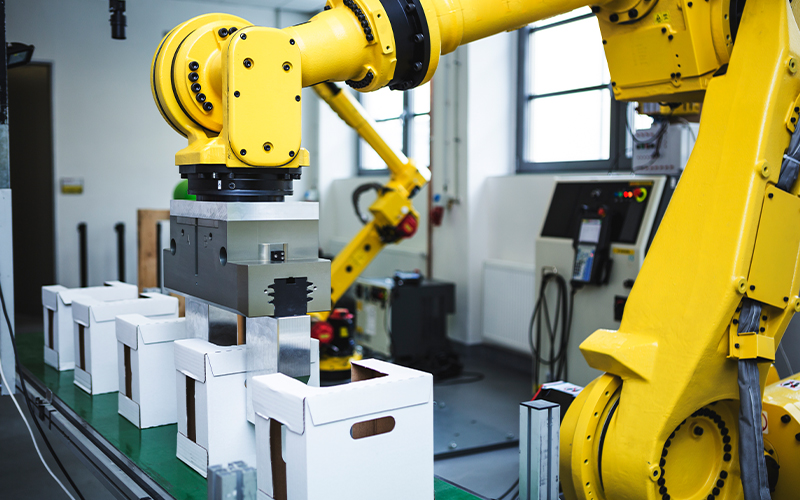BUSINESS TRANSFORMATION
How can Robotic Process Automation (RPA) Improve Customer Experience (CX)
Positive customer experience (CX) is a key difference between successful and not-so-successful businesses. According to a recent Gartner Customer Experience Survey, CX is the new marketing battlefront. To win this battle, it becomes necessary for businesses to adopt advanced technologies that can help improve their CX.
Robotic Process Automation (RPA) is the technology that helps automated devices mimic redundant or mundane tasks performed by a human. When used to interact with customers, RPA handles several actions that are typically performed by humans. RPA can capture and interpret data efficiently and speedily.
The word "robot" originates from the Slavonic word "robota," which means servitude, forced labour, or drudgery. It was used for the first time in a play written by Czech writer - Karel Čapek.
There has been a constant push to automate as many business processes as possible in the last decade. Any workflow-driven process, such as CX, can be automated easily to reduce the burden of our everyday workload. RPA can help improve efficiency in CX and deliver intelligence data that is more accurate and is used to derive information for process improvement analysis.
Improving CX by using robotic automation in BPO
Based on the Pareto principle, we can assume that 80% of the volume of customer interactions comes from the top 20% of the reasons why they are contacting. This allows every business to create fool-proof processes to handle the most common customer interaction tasks. Using RPA to run these processes ensures a cost-effective and efficient method to deliver high-quality customer support.
There are multiple RPA solutions available on the market that significantly contribute to improvement in CX. Ranging from a chatbot (paired with a self-service knowledge base) to creating an omnichannel engagement system, these enhancements can respond to and/or resolve most customer queries in the best possible way.
Let us look at the key competitive advantages of using RPA to manage customer interactions:
- High repeatability quotient – a robot following process instructions to the T ensures consistency in every interaction and zero process deviations, thereby reducing operational risks
- Faster turnaround times (TAT) – response to customers is almost immediate once RPA has been implemented
- Round the clock agile* support – customer needs can be catered to 24/7 without worrying about workload or shift management
- Ability to build customised experience – with the predictive feature of RPA, organisations can personalise the CX based on the captured data including demography, preferences, history etc. of individuals (think Netflix)
- Enhanced productivity to focus on value-added tasks – once the daily mundane tasks have been taken care of by RPA, the human workforce gets more time that can be spent on critical CX activities like face-to-face interactions and/or use soft skills to help define customer success
- Efficient feedback management – automated feedback processes ensure smooth collection of necessary input that drives an overall experience improvement
- Improved Return of Investment (ROI) – when a software bot, that typically costs less than a human employee, does the heavy-lifting of the work, the organisation automatically reduces cost
Resistance to Change
Most organisations believe the myth that their existing IT systems will need a complete overhaul to accommodate RPA systems. The reality is that the organisation's current systems need not be replaced for the implementation of a digital workforce. Instead, the RPA systems help leverage the existing systems and Transform business processes. It can also be phased into the system in stages.
Another common misconception about implementing RPA is that the digital workforce cannot provide a human touch while interacting with customers. Intelligent RPA systems interact with a customer, probably in a more humane way than most humans! Plus, the faster and more accurate responses ensure excellent CX throughout.
The Bottomline of BPO RPA
Customers want to be appreciated.The best possible way to appreciate the customer is by providing a world-class customer experience. By using RPA, customer satisfaction only increases since the interactions become more consistent, error-free, less time-consuming, and easily accessible. The customer experience is only going to get better in the long run with more processes becoming automated to free up the human workforce’s time with customers.
The possibilities of where RPA can be used are endless. Informed by data collected through RPA, organisations can connect with customers in a timelier and personalised way.
*For organizations on the digital transformation journey, agility is key in responding to a rapidly changing technology and business landscape. Now more than ever, it is crucial to deliver and exceed on organizational expectations with a robust digital mindset backed by innovation. Enabling businesses to sense, learn, respond, and evolve like a living organism, will be imperative for business excellence going forward. A comprehensive, yet modular suite of services is doing exactly that. Equipping organizations with intuitive decision-making automatically at scale, actionable insights based on real-time solutions, anytime/anywhere experience, and in-depth data visibility across functions leading to hyper-productivity, Live Enterprise is building connected organizations that are innovating collaboratively for the future.






